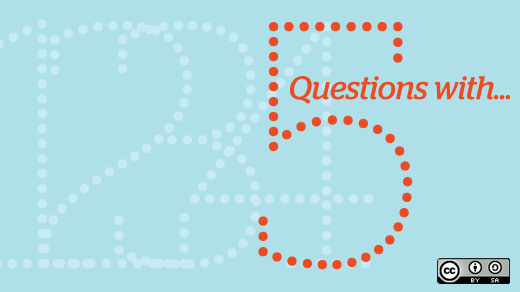What the heck is an innovation competition? Can we compete and collaborate at the same time? Could we solve world hunger through collaborative competition?
I quizzed Anil Rathi, CEO of Idea Crossing, a company that hosts innovation competitions on behalf of companies and organizations, on these questions and more.
1. What exactly is an innovation competition and why would someone participate in one?
An innovation competition is a type of "skill-based" competition in which passionate contributors can demonstrate their skills in a time-boxed, competitive context. An organization asks a carefully-framed challenge question to participants who possess certain skills to answer the question or deliver the solution.
People compete in skill-based competitions for many reasons. We found that very few winners have been driven by money itself. For example, one may participate in a competition to sharpen his or her skills, use it as a door opener to get a new job, earn recognition, rank him or herself vis-a-vis the best in a particular community, networking, or simply because he or she is a die-hard problem solver who enjoys tackling real-world problems.
2. According to your website, Idea Crossing believes "the collective ideas of many will always be better than those of a few." I hope you mean that by generating a lot of ideas, you have a better chance of getting the best ones. Right? Or are you the Borg in a man-suit?
Ha. Yes, it does mean that, it's really a mindset more than anything. It's the belief that there are multiple ways of approaching the same problem. It's not a "my way or the highway" attitude, it's about being open and curious about looking at a problem through different lenses to arrive at the solution. Many organizations we have worked with typically combine or cross-pollinate all the ideas into one comprehensive solution. A great example of this mindset in action is from Vivek Kundra, Obama's CIO. In recent addresses on the Open Government Directive, Vivek said the U.S. government must "tap into the ingenuity of the American people to show us a better way, to show us an innovative path."
3. In the open source world, collaboration is a key principle. How can collaboration and competition can co-exist? Doesn't competition beat the collaboration out of people?
Collaboration and competition may seem like opposites, but they are really not. In team-based competitions ad-hoc groups form and collaborate with one another. Look at the Netflix Prize, high ranking teams pooled together their talents and merged into one larger team to win the prize. Competition is the glue that brings people together, sorts out the duds from the studs, and provides the impetus to focus on common goals.
"A prize is an 'Arthurian romance' that makes people feel that they can participate in the quest for a solution." - Geoffrey Moore, author of Crossing the Chasm.
4. Recently, in the DARPA balloon challenge, the winning team used social media applications like Facebook and Twitter to find 10 balloons hidden across the US in less than 9 hours. Does this set a new bar for collaborative competition speed? If we can find 10 balloons in 9 hours, how long should it take to solve world hunger?
The winning team for the DARPA challenge performed an amazing feat. The challenge itself was well structured and specific enough that it directed participants' energies to use technology and social networks to find a solution. It's critical to ask specific questions. When we ask open-ended questions we will get open-ended answers. The question can be framed to have lane markers yet still produce creative solutions. I remember reading a book by 37signals and one of the chapters was entitled Embrace Constraints and the author wrote "constraints drive innovation."
So in order to accelerate the solution of world hunger or other social problems we need to learn to ask the right questions and efficiently direct participants' time, money and resources to accelerate breakthroughs for the benefit of humanity.
5. What is the most important competition you have hosted so far? To you, I mean.
Every competition is meaningful in a different way. Of course, the ones with a social purpose are definitely rewarding. Two that come to mind relate to energy---one for renewable energy and the other for the energy of children!
This past summer, we were working with Masdar City in Abu Dhabi customizing our software platform for second annual $2.2MM Zayed Future Energy Prize. Masdar is the $22B construction project to build the world's first zero carbon, zero waste city. The inaugural winner was Dipal Barau of Grameen Shakti, a social entrepreneur in Bangladesh, who built a system for providing inexpensive solar energy to over 2 million people. On January 19th, the 2nd annual winner was announced (authors note: it was awarded to the Toyota Prius, more information here).
Another competition we powered was for HopeLab Foundation, which is part of the Omidyar network. HopeLab’s Ruckus Nation idea competition was designed as the first phase of HopeLab’s effort to develop effective products to address childhood obesity by increasing physical activity in middle-school-aged kids. The competition challenged participants to imagine innovative products that would increase physical activity among tweens, and more than $300,000 in cash and prizes was awarded to winners. Since then HopeLab has been commended for their work by President Obama and have filed 6 patents based on the ideas submitted. I think products are due out sometime this year.
--
Anil Rathi founded Idea Crossing in 2002 with the vision of enabling organizations to design and automate the administration skill-based competitions. To date, the company has managed dozens of competitions using its DESIGN | PRODUCE | PLAY process and Skild™ software platform. Most recently, Idea Crossing was selected as a case study in McKinsey & Company's report on philanthropic innovation prizes and has been featured in numerous articles such as CNN Money, Business 2.0, Inc. Magazine, Chicago Tribune, MIT Innovations, and books on the topic of innovation prizes and crowdsourcing. Anil graduated from the University of Wisconsin and received his MBA from Thunderbird-The School of Global Management.






Comments are closed.